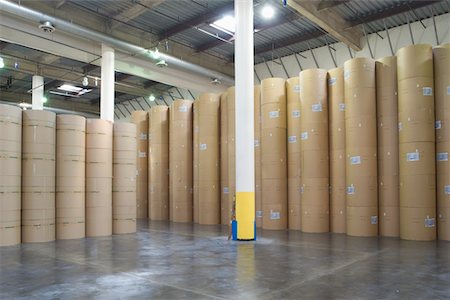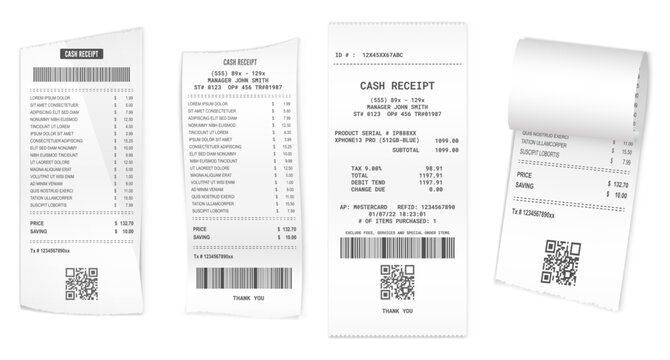Technology
Thermal paper roll technology relies on a heat-sensitive coating applied to the paper surface. When exposed to heat from a thermal printer’s print head, the coating undergoes a chemical reaction, resulting in the desired image or text. This process is fast, efficient, and produces high-quality prints without smudges or smears.

Key Features
Thermal Coating
The heat-sensitive coating is the heart of thermal paper technology. It’s typically composed of a combination of dyes, developers, and stabilizers that react to heat.
Base Paper
The base paper provides the foundation for thermal printing. It’s often made from high-quality wood pulp or synthetic materials to ensure durability and longevity.
Image Stability
Thermal prints are resistant to fading, making them ideal for long-term documentation such as receipts and labels.
Environmentally Friendly
Thermal paper is free from ink or toner cartridges, reducing waste and environmental impact.
Thermal Paper Applications
Versatile Solutions Across Industries
Retail
Point-of-sale (POS) systems rely on thermal paper rolls for printing receipts quickly and efficiently.
Logistics
Shipping labels printed on thermal paper enhance barcode readability and durability in demanding logistics environments.
Healthcare
Thermal paper is commonly used for printing patient labels, prescription labels, and medical charts due to its image stability.
Hospitality
Tickets, boarding passes, and event tickets are often printed on thermal paper for their convenience and speed.
Government
Electricity & Water Bills, Compounds, etc.
Others
Thermal paper has wide general usage and it is getting more commonly in industry ie banking, transportation, entertainment, education etc.
The Benefits

Speed & Efficiency
Thermal printing is fast, producing prints in seconds, making it ideal for high-volume printing environments.

Cost-Effectiveness
With no need for ink or toner cartridges, thermal printing reduces operating costs and maintenance requirements.

Space-Saving
Thermal printers are compact and require minimal space, making them suitable for small businesses and tight workspaces.
Machines Automation

Color Printing Production

Quality Control


Storage
Jumbo Roll Storage
Preservation of Print Sensitivity, Protection from Heat and Sunlight, Prevention of Moisture Damage, Avoidance of Chemical Contamination, Minimization of Dust and Debris, Extended Shelf Life, Cost Saving, Reliable Performance.
Proper storage of thermal paper rolls helps preserve their quality, sensitivity, and longevity, ensuring optimal performance and reliability when used in thermal printing applications.

Warehouse
Finished Goods Warehouse
Inventory Management Efficiency, Bulk Storage Capacity, Customised Storage Solutions, Streamlined Order Fulfillment, Quality Assurance and Control, Logistics Optimization, Business Continuity Planning, Scalability and Growth Opportunities.
Operating a thermal paper warehouse provides businesses with efficiency, flexibility, and control over inventory management, ensuring reliable supply chain operations and customer satisfaction in the thermal paper industry.

Delivery
Delivery
Order Placement, Order Processing, Packaging, Shipping Method Selection, Labeling and Documentation, Transportation, Tracking and Monitoring, Delivery Confirmation, Customer Satisfaction.
Efficient thermal paper delivery is essential for maintaining supply chain effectiveness, meeting customer expectations, and ensuring seamless order fulfilment in the thermal paper industry.
Solving the pain points and achieving requirements
Product Advantage

Smudge-Free and Water Resistant
This ensures that printed information remains clear and intact, even in challenging conditions, making thermal paper ideal for outdoor or industrial environments.

Longevity and Durability
This ensures that important documents, receipts, or labels remain readable and reliable for extended periods, making thermal paper suitable for archival purposes.

This ensures the additional layer of authentication as a powerful deterrent against counterfeiters attempting to replicate without compromising document confidentiality or aesthetics.
Products Specifications
With Localise Forest Research Institute Malaysia (FRIM) Certification
(certification no.: SN1101124)
| No. | Test Conducted | Test Method | Unit | Other Information |
|---|---|---|---|---|
| 1 | Grammage | MS ISO 536:2001 Paper and Board-Determination of Grammage | g/m² | Area: 100 cm² |
| 2 | Thickness | MS ISO 534:2018 Paper and Board-Determination of Thickness, Density & Specific Volume (ISO 534:2011, IDT) | µm | Equipment: L&W Micrometer |
| 3 | Tensile Strength | MS ISO 1924-2:2010 Paper and Board – Determination of Tensile Properties- Constant Rate of Elongation Method (20mm/min) | kN/m | Equipment: L&W Micrometer |
| 4 | Brightness | MS ISO 2470-1:2010 Paper, Board & Pulps- Measurement of Diffuse Blue Reflectance Factor – Part 1: Indoor Daylight Conditions (ISO Brightness) | % | Equipment: Technidyne Spectrophotometer |
| 5 | Smoothness | MS ISO 8791-2:1999 Paper & Boards- Determination of Roughness/Smoothness (Air Leak Methods) – Part 2: Bendtsen Method (ISO8791-2:1990, IDT) | ml/min | Equipment: L&W Bendtsen Tester |
| 6 | Wood Free | T401 OM-93 Fiber Analysis of Paper and Paperboard. Observation using “Phloroglucinol Stain” | – | – |
